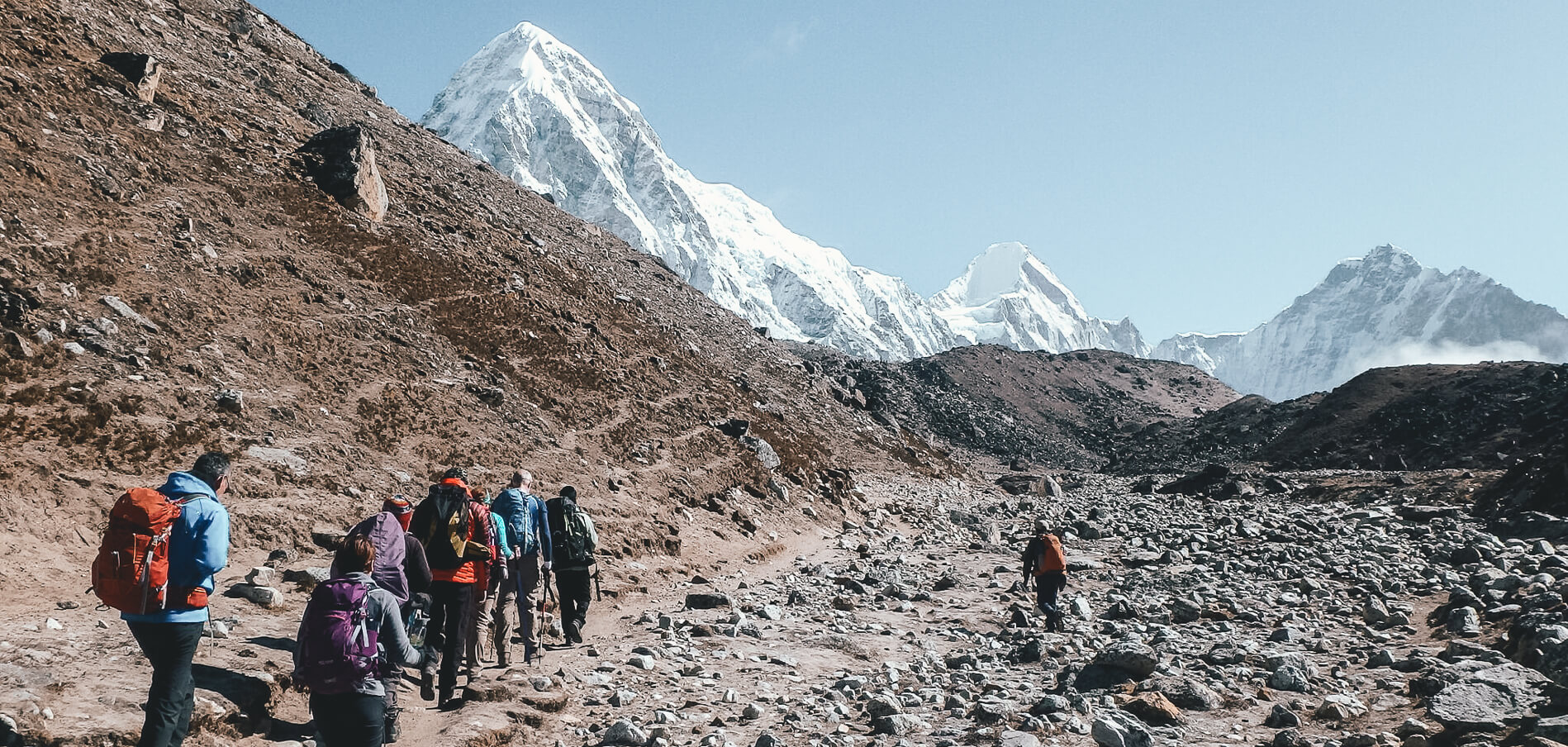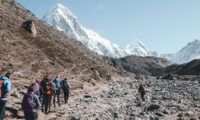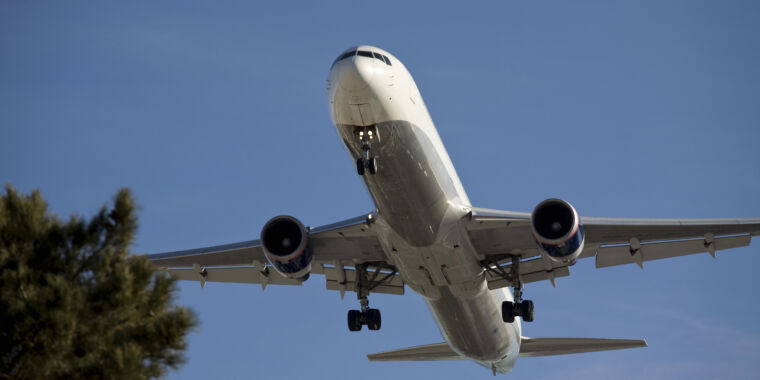
Trekking the Annapurna region of Nepal is so much more than a walk, it’s an odyssey through the splendours of nature, both physically and culturally; a personal experience of life at the very edge of existence. To get the most out of Annapurna, in the light of insightful gems, the guidebook and fixed itinerary just won’t cut it. Preparedness, awareness, and willingness to accept what this vast Region has to offer.
The Annapurna region is where many of the world’s most famous trekking trails can be found, like the Annapurna Circuit and Annapurna Base Camp (ABC). These trails are well-trodden , but everyone’s individual experience will be different. The most enlightening trips often start with asking good questions: When should you go? What do the cultures here teach us? What happens to the mind and body on a high-altitude trek?
Annapurna Circuit Timing is essential. The spring and fall are widely held as the best seasons, with clear skies and pleasant temperatures as well as lively trails—, rom r, rhododendrons in full bloom, to mountain villages active with harvest season. It’s worth avoiding the worst of Nepal’s monsoon and winter seasons to lower your chances of getting stuck in a landslide, flight delay, or face numbingly cold weather that can turn an awesome trek into a beast.
“Another aspect of being able to learn from the experience is to interact with the locals off the trail. The Annapurna region is home to several different ethnic communities, including the Gurung, Thakali, and Magar people. Listening to locals, eating local dishes and pa, and participating in village life are all keys to unlocking those deeper meanings of traveling. These genuine connections turn your sightseeing trek into one that is culturally significant.
Knowing your physical and mental capacity is equally important. The Annapurna routes, in particular the Circuit and the Thorong La Pass, test your stamina with long hiking days and a lot of altitude change. Preparation for your trek ensures that you don’t just make it through the trail — you enjoy it. Cardio fitness, hiking practice, and strength training help all prepare for the demands of this challenging environment.
Packing the right gear can also highlight your experience. Bring gear for all kinds of weather, from steamy lowlands to nippy alpine heights. You’ll want a good backpack, synthetic clothes that wick moisture, and a sleeping bag for cold temperatures. Don’t forget small items like water purifiers, headlamps, and sunscreen —whic, which will prevent small discomforts from eclipsing the Himalayas’ magic.
To really experience Annapurna with thoughtful understanding, you must also respect the environment. The Annapurna Conservation Area has been protected on account of its biodiversity and cultural heritage. And trekkers who tread lightly — by packing out waste, steering clear of plastic an,d staying in eco-consciousness — help maintain the beauty they’ve come to witness.
Ultimately, the secret to opening up Annapurna’s depth is not simply walking, but walking with intent, awareness and re, and respect. Each step unveils some discovery — not just about the land and its inhabitants but also about yourself. When you view Annapurna in the flashlight of meaningful perspective, the ek takes on a whole different depth—it becomes an experience that spans beyond the physical domain and becomes an attaining journey you just learned so much from and connected so much to.
What is so special about trekking in the Annapurna region?
Annapurna Circuit Trek is one of the world’s most diverse trekking areas, geographically and culturally. Angles vary from subtropical jungle through to terraced farmland and alpine meadows, and over high mountain passes, you’ll never have in a single trek. Unlike other walks, where the emphasis is only on how high you can trek, or on the sheer scale and horror beauty of the view, on this walk, Annapurna has it all for the eyes, the soul, and th,,e senses.
The area is inhabited by ethnic groups including the Gurung, Thakali, Magar, and Manangi. Trekkers passing through these villages observe real rural life, religious practices, and traditional housing. This cultural discovery will make the trek more than just a feat of endurance and will open a window into Nepalese culture.
The Annapurna Conservation Area, the first and largest conservation area in Nepal, helps protect the people and resource base of the area. The eco-diversity of the conservation area provides excellent opportunities for seeing rhododendron forests, rare orchids, snow leopards, and Himalayan blue sheep.
Trekking in Annapurna is also relatively easy with well-defined trails, teahouse accommodation, and experienced local guides. Whether you’re targeting Annapurna Base Camp or completing the full Annapurna Circuit, the area offers great views of nature, culture, and your abilities, and is one of the most all-around rewarding trekking areas on the planet.
What makes timing so crucial for Annapurna treks?
The timing of your trek in the Annapurna region is essential to safe, comfortable and pi, and picturesque trekking. The best trekking months are generally considered to be in the spring (March to May) and autumn (September to November) seasons. These times of year promise sunny skies, with moderate temperatures and stable trail conditions.
In the spring, trekkers have the chance to see blooming rhododendrons and wildlife in motion, as well as views of peaks including Annapurna I, Machapuchare, nd Dhaulagiri. In the fall, after the monsoon, the air is clear, crisp, and some of the clearest mountain views of the year are to be had.
Timing it wrong — for instance, during the monsoon (June through August) or during the deep winter (December to February) — can result in obstacles. The monsoon brings landslides, slippery trails, and leeches. Snow and freezing temperatures come with winter conditions, which might close high passes, such as Thorong La, and make accommodations less dependable.
Annapurna Circuit Trek Itinerary In addition to clearer visibility and reduced risk to health, trekking in season is a much more enjoyable experience. It also allows you to engage with on-the-ground life — it’s when locals are chattiest, most active, and best prepared for visitors during busier times. Selecting the Correct Window for Your Trek Perhaps one of the most valuable soulful advice for a successful Annapurna trek is following the right window.
How does your cultural immersion enhance your trek in Annapurna?
Inviting Annapurna opens its doors wide in an experiential way and not with a superficial walk around the area. The hike isn’t just about mountain panoramas; it’s also a walk through villages inhabited by Gurungs, Thakalis, Magars, and other ethnic groups, each with distinct languages, traditions, and customs.
Little things, like saying “Namaste” to people on the street in Nepali, wearing conservative clothes , and joining people for a cup of tea, can provide inroads to conversations and connections. Family-run teahouses instead of big commercial lodges offer opportunities to stay and support the local economy pr, providing an authentic expexperienceaving a sense of the spiritual dimensions enhances your experience of the region. You will pass prayer wheels, stupas, mani stones, and monasteries. Details on Tibetan Buddhist influence, local festivals and tr, and additional farming practices offer context that makes the scenery into the story.
When you make respectful and curious engagement, you’re not just moving through a region — you join its living tapestry. These times of cultural communion stay with you long after the trek comes to a close, and it is these that subtly shift your Annapurna experience from one that will affect you and remain in your memory to one that becomes deeply personal and profound.
How much does mental and physical preparation factor into things?
Annapurna Circuit Trekking Physical fitness is a plus when trekking Annapurna, but just as important is mental preparation. The trail consists of many days of hiking, steep climbs, and large elevation gain, particularly on treks such as the Annapurna Circuit, which passes through the Thorong La Pass at more than 5,400 meters.
To prepare physically, start a (walking) training program 6–8 weeks in advance of your trip. This can consist of cardio exercises such as hiking, running, and cycling, as well as strength training and flexibility work. Backpack training also mimics specific trekking situations and decreases the risk of injury.
Mental preparation: Being prepared to accept discomfort, be it aching muscles, cold weather, or very basic accommodation. Weather can change suddenly, and plans may adapt, so flexibility is key. In other words, mindset might be what turns a bad day on the trail into a good one.
Recognizing that the highs and the lows are all part of the process – well, then setbacks aren’t so discouraging. A happy, patient attitude reveals the greater gifts of trekking — resilience, gratitude, and the journey itself. The most interesting Annapurna insights are usually found not when you look out at the mountains but when you look in at how you react to them.”
What to bring to the Annapurna Region?
Pack right on Annapurna. By packing well, you can help to ensure comfort, safety, ty and freedom on the trail. Because of the altitude, time of day, and season, the climate of that region can be so different. This means you’ll be faced with warm temperatures on the daytime hikes and often freezing temperatures at night.
It’s all about layering: On that note, you’ll want to haul with you moisture-wicking base layers, insulating mid-layers (think: fleece or down jackets), and a waterproof outer shell. Goo,d broken-in trekking boots are a must-have, as is a warm sleeping bag (rated for at least -10°C or colder). You also need gloves, a hat , and a buff or scarf to protect you from the wind.
Other essentials include a water-purification system, headlamp, trekking poles, sunscreen, sunglasses, and a power bank for charging devices. Rugged, Yes! We work with the best material suppliers andsewerss and we put a lot into making a tough, durable backpack with a rain cover to make your life a little bit easier.
Annapurna Round Trek Medical supplies such as altitude sickness pills, band-aids, and electrolytes are also smart to bring, as medical support can be hours away in the hinterlands. You have to know what to pack and how to pack it. It also keeps you ahead of the curve in dealing with whatever the Annapurna trail has in store for you—a more seamless, insightful adventure.
What are the main trekking trails in the Annapurna area?
The Annapurna region has some of the world’s best treks, and every trek is a different experience. The most well-known is the Annapurna Circuit, a 160–230 km loop which takes 15–20 days to complete. It winds through lowland rice fields, dense forests, and alpine valleys before making its way up the Thorong La Pass at 5,416 meters — the trek’s high point both in terms of sheer physical challenge and in the symbolic altitude it represents.
Annapurna Base Camp (ABC) Trek is yet another popular trek that typically lasts for 7-10 days. It’s a shorter, out-and-back trail that brings you to the base of Annapurna I, surrounded by a dramatic amphitheater of Himalayan giants. If you prefer shorter treks, the Ghorepani–Poon Hill Trek provides stunning sunrise with panoramic views of the Dhaulagiri and Annapurna ranges in only 3–5 days.
Half a dozen lesser-known treks, such as the Khopra Ridge Trek and Mardi Himal Trek, offer quieter, off-the-beaten-path options and equally spectacular views. Each of the routes has its own cultural and altitude challenges, as well as scenery highlights.
Deciding on the right route will depend on the amount of time you have, how much you want to hike, and how much you want to be alone. To understand these options is to be able to match your expectations with The Trail that serves your purpose, enabling access to a more authentic and personalised Annapurna.
So, what’s the impact of altitude on your Annapurna trek?
Annapurna Trek Altitude is a significant issue in the Annapurna area, as most of the popular circuits of the Circuit and Base Camp trek are high. As you climb, the amount of oxygen drops, and even gentle physical effort can seem hard. This elevation change can result in Acute Mountain Sickness (AMS) if one isn’t careful.
The symptoms of AMS are headaches, nausea, weakness, lightheadedness, and dyspnoea. To avoid it, the most important strategy is gradual acclimatization — ascending slowly, taking rest days (especially in a place like Manang), and keeping well-hydrated.
If you’re desperate, there’s medication like Diamox that may help with prevention, but there’s no substitute for pacing yourself properly and listening to your body. When symptoms get worse, the only real remedy is to go down.
Knowing how altitude affects the body — and planning your route by making gradual gains — can mean the difference between success and evacuation. Walking smart, giving yourself time to acclimate, and being aware of red flags are probably the most important lessons you can take with you into the wilderness.
What are local guides and porters used for?
Tilicho Lake Trek: Hiring a local guide or porter will make the experience even more rewarding. Guides provide more than just route knowledge; they offer cultural context, historical perspective, and practical assistance. They are particularly useful in remote locations or emergencies like weather changes and health issues.
Porters help you carry your luggage, so you can focus on trekking without having to fumble with an uncomfortable and heavy bag, especially beneficial as you ascend to higher altitudes and energy-saving measures become necessary. This also employs locals, and helps to support Nepal’s economy and encourage responsible tourism.
Most guides and porters were born and raised in the Annapurna region. Their intimate knowledge of the land, traditions, and dialects makes them an extra form of security and authenticity for your journey. They can interpret in villages, suggest less-trodden routes, and may even teach you a few Nepali words.
Solo walking is possible, but walking as part of a local support crew not only provides physical respite but also helps you connect more deeply with the environment and the communities you walk through. It’s one of the smartest insights for both beginner and experienced trekkers.
What are some of the ways to travel sustainably in the Annapurna region?
You need to ensure that your travel to this region is sustainable. One of Nepal’s most popular trekking regions, it’s already beleaguered by litter, deforestation, and over-tourism. These are travel practices that, if used, will help protect the natural beauty and local cultures that make the area so special.
One small thing people can do is bring a reusable water bottle on adventure vacations and use purification tablets or filters instead of buying plastic bottles. This has a hugely positive impact in terms of the amount of plastic waste decreased, which could end up in the rivers or the forest elsewhere.
Lodging in small, locally owned teahouses, eating local food, and hiring local guides make sure tourism dollars go right into communities. You can also reduce your carbon footprint by not traveling by helicopter unless it’s an emergency.
Observe wildlife, stay on marked trails, and Leave No Trace. Keep energy use in mind — hot showers and charging devices are dependent on finite resources like firewood or solar panels.
Your trek becomes part of the solution, not the problem, by making thoughtful choices. Trekkingsustainably is one of the most important values you can bring with you—it keeps Annapurna wild and beautiful and accessible for future generations.
How Reflection Can Improve Your Annapurna Trek?
Annapurna Circuit Nepal Reflection is often the missing ingredient in adventure travelers’ experiences, but in the Annapurna, it can be transformative. The trek entails strenuous days, many walking in silence, with peaks rising around you, prayer flags fluttering, and valleys plunging deep. And this is a wilderness in which to think.
Keep a travel journal; meditate in some faraway teahouse, or simply spend some time observing what’s around yo u mindfully, brings new depth of understanding. It lets you do more than simply pass through the landscape; rather, it lets you absorb the emotional and spiritual consequences of the journey.
You may be more clear in your thinking, reevaluating personal struggles, or that much more grateful for simple things and nature. These moments of stillness and introspection are when the trek becomes less of a physical challenge and something like an emotional or even spiritual passage.
In creating room for silence and reflection, you find the deep heart of Annapurna. It ceases to be somewhere you have been and becomes part of who you are. That is a success no altitude or summit photo can rival.
How long does it take to climb Annapurna?
Ascend the 10th highest peak in the world, Annapurna I, at 8,091 meters. This is a significantly high-altitude mountaineering expedition, not a trekking route. The ascent of Annapurna I generally takes 6-8 weeks, with weather, acclimatization, and team health & strategy affecting the time and duration. That period includes multiple weeks to trek to base camp, set up higher camps, go on rotations for acclimatization, and wait for a good weather window to get to the top.
The beautiful Annapurna I is known as one of the most dangerous 8,000-meter peaks on the planet as a result of its avalanche-prone faces, difficult technical climbing sections, and complicated weather. The death rate on Annapurna is traditionally high, although it has declined in recent years with better planning, weather forecasting , and support logistics.
Both climbers and those seeking to go to the summit need to have advanced mountaineering skills, specialized gear, and they commonly use the assistance of Sherpas and professional expedition guides. Ascents of Annapurna are not comparable with the Annapurna Circuit or Annapurna Base Camp treks, trekking routes which have become well-traveled in recent years and where participants trek without necessarily being fully prepared.
For a more approachable adventure, trekking near these Himalayan peaks offers stunning views and cultural immersion, without the extreme hazards of technical mountaineering.
Can you trek the Annapurna Circuit without a guide?
Yes, it is possible to trek the Annapurna Circuit without a guide, but there are some things you need to know. From April 2023, Nepal requires all foreign trekkers to be accompanied by a guide on treks in most of the national parks and conservation areas, including the Annapurna region. That said, although it’s physically possible to walk the trail, you are now required to walk it with a guide in order to comply with government regulations.
Before that rule, many experienced trekkers were able to do the Circuit on their own, thanks to well-signed trails, abundant teahouse accommodation, and maps or GPS apps. The area is crowded, which makes it easier to encounter other trekkers and locals along the way.
With a guide, much of the experience still feels solo-like — you walk at your own pace, select your accommodations, and manage all your equipment. But a guide adds that extra bit of security, especially when crossing high passes such as Thorong La, when altitude sickness and weather can turn into serious issues in a hurry.
A guide is also a cultural key to unlock doors: to translate local customs, explain, and connect more fully with the villages and people you pass. So, although officially you can no longer trek the range completely solo, you can still have a low-key, independent-feeling Annapurna Circuit experience.
What is the best time to visit the Annapurna Circuit?
The Annapurna Circuit is best trekked during autumn (September to November) and spring (March to May). It is these months when the weather is its most predictable: consistent blue skies, little to no rainfall, and mild temperatures – a perfect time to be visiting the mountains.
In autumn, the monsoon has come to an end, and the winds are fresh and clear. The visibility is top-notch, and you’ll have panoramic views of the likes of Annapurna I, Dhaulagiri, and Machapuchare. The temperatures are mostly pleasant, even at higher altitudes, although it can be cold at night, particularly on the way to Thorong La Pass.
Spring is marked by the arrival of blooming rhododendrons, warmer weather, and lush green scenery. “Although there could be some haziness in lower areas, clouds are up at higher levels, sand you can still see the spectacular view. In spring, there are more wildlife observations for nature lovers, as well.
Don’t go trekking in monsoon (June to August), when trails become muddy and landslides are more common. The (Dec-Feb) winter is a quieter, riskier time, with snow and ice at high passes.
In terms of safety, aesthetics, and general ease, autumn and spring are the best seasons to hike the Annapurna Circuit. It is recommended to book early in these busy seasons as teahouses and guides can get booked up early.
How difficult is the Annapurna Sanctuary trek?
Annapurna Sanctuary Trek (Annapurna Base Camp or ABC Trek) is a moderate trek that is a good choice even for inexperienced people or with shape, preparing to stay a few days in the mountains. The trek itself usually takes between 7 to 11 days, depending on where you start and how fast you walk.
What makes it accessible is that it doesn’t climb higher than 4,130 meters, so altitude feels like less of an issue than on the Annapurna Circuit or Everest Base Camp trek. Don’t underestimate the trail, though. Long ascents, numerous stone steps, and constant elevation gain will be your lot. Daily walking is generally between 5 and 7 hours.
Fitness is good, but more important is your mental resilience and endurance to hike day after day. Train well enough — with regular walks and cardio workouts, and strength conditioning — and you’ll be just fine.
Logistical ease: One of the advantages that comes with the teahouse accommodation is logistical ease. You won’t need to bring camping gear, and meals are easily accessible. The route also travels through dense forest, terraced terrains, and local villages with enough scenic and cultural highlights.
So very difficult but not to extremes, so that the Annapurna Sanctuary trek is perfect for beginners and experienced trekkers who want meaning to their Himalayan adventure.







